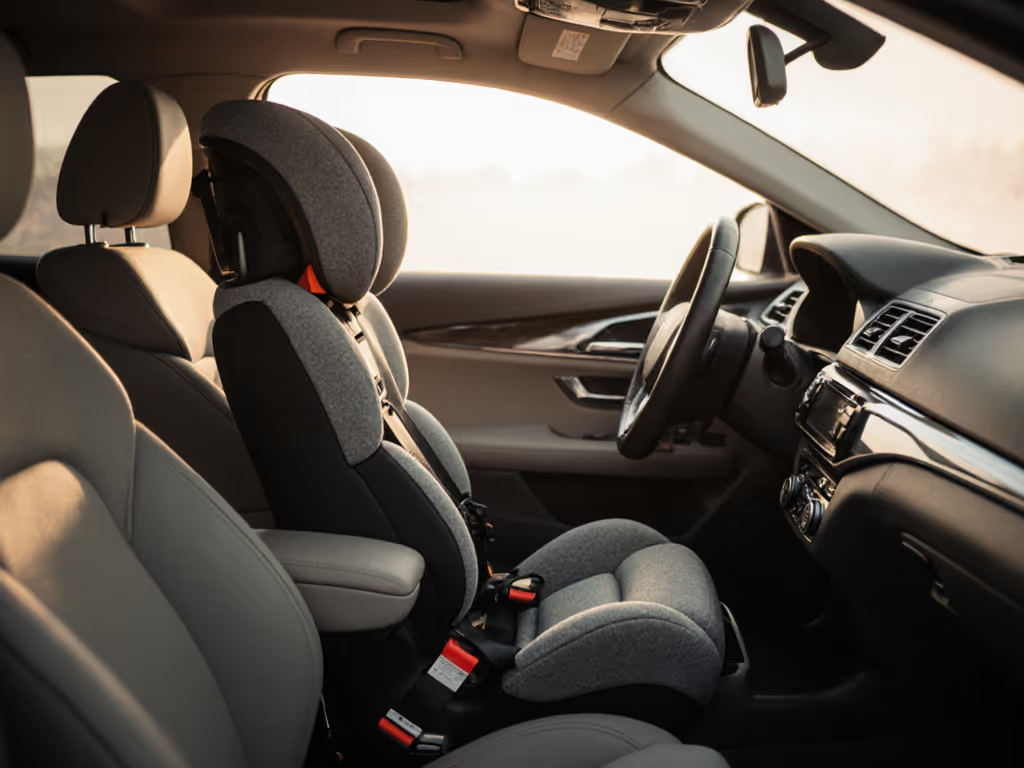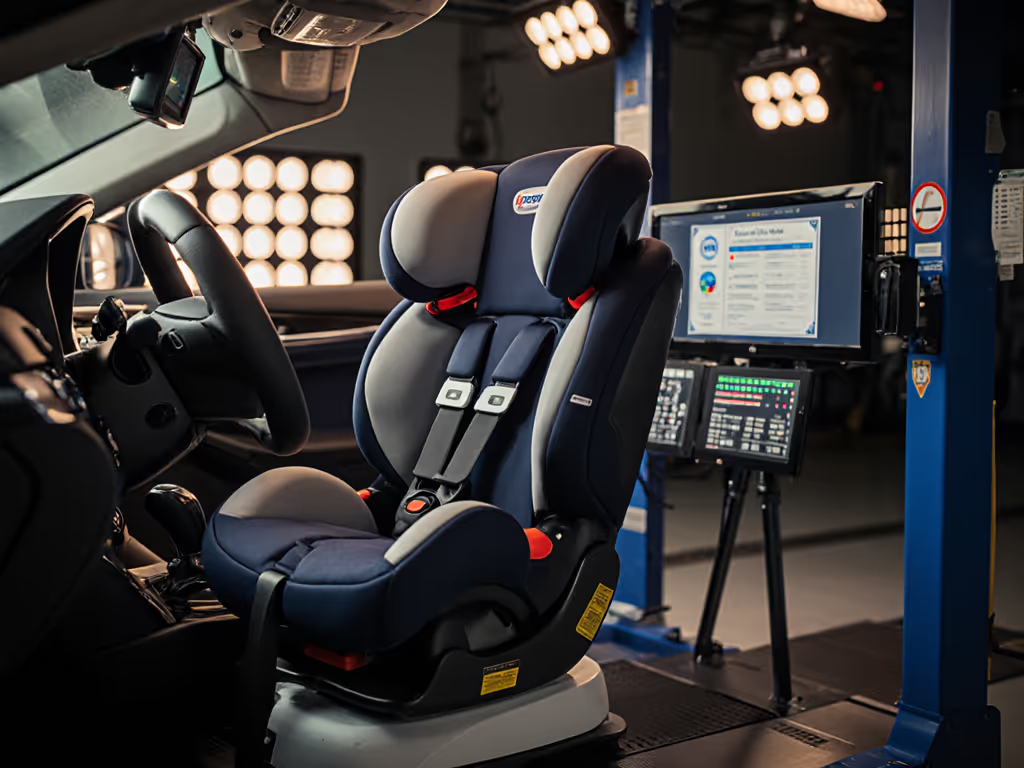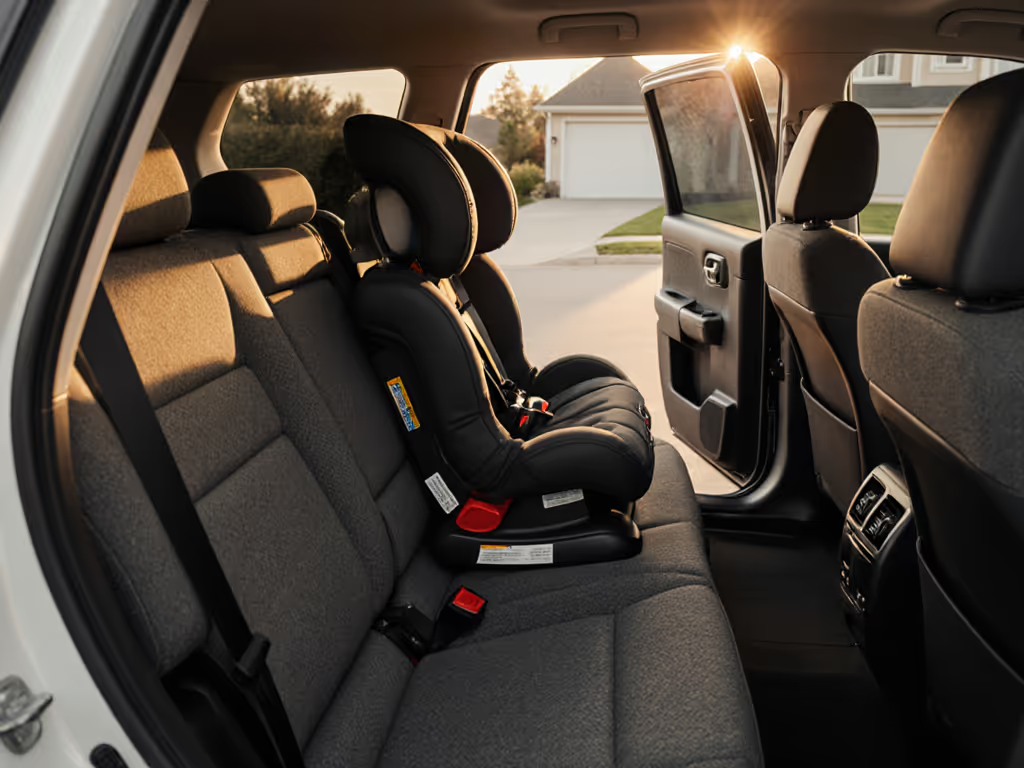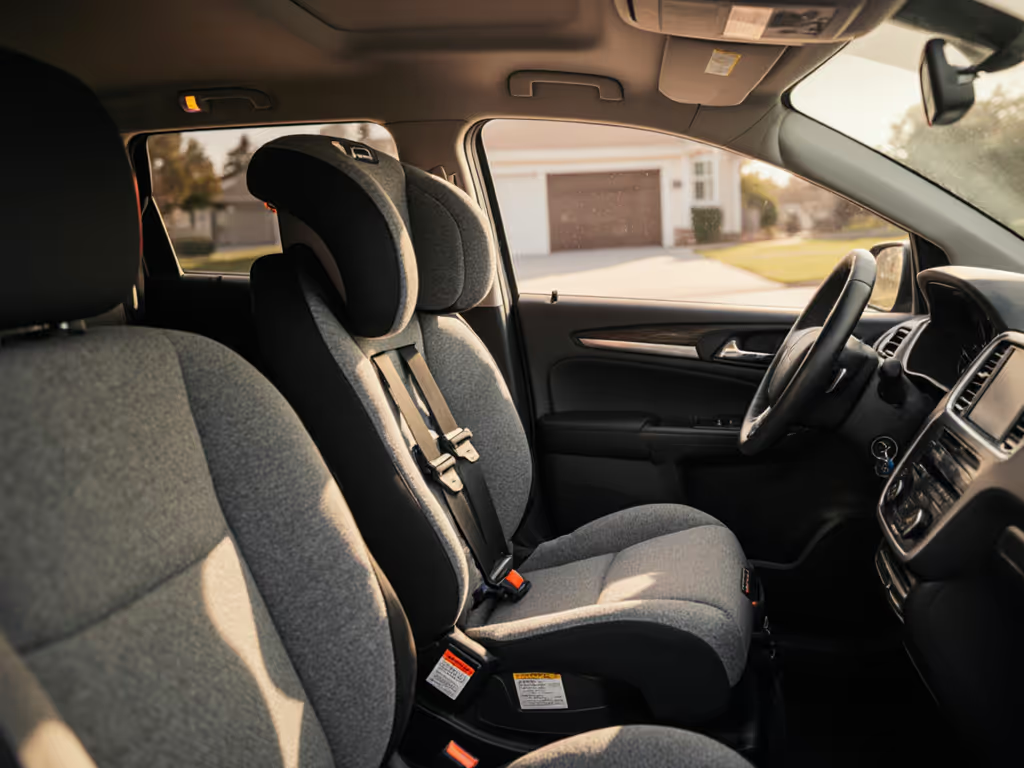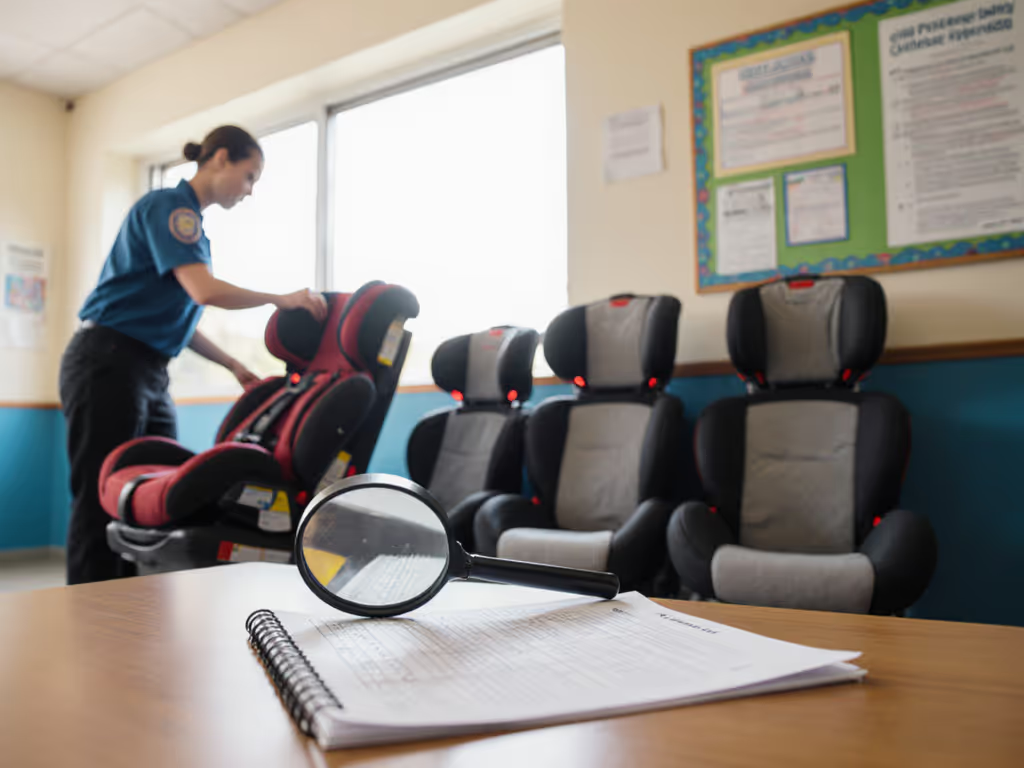
Car Seat Compatibility: Complete Guide for Parents
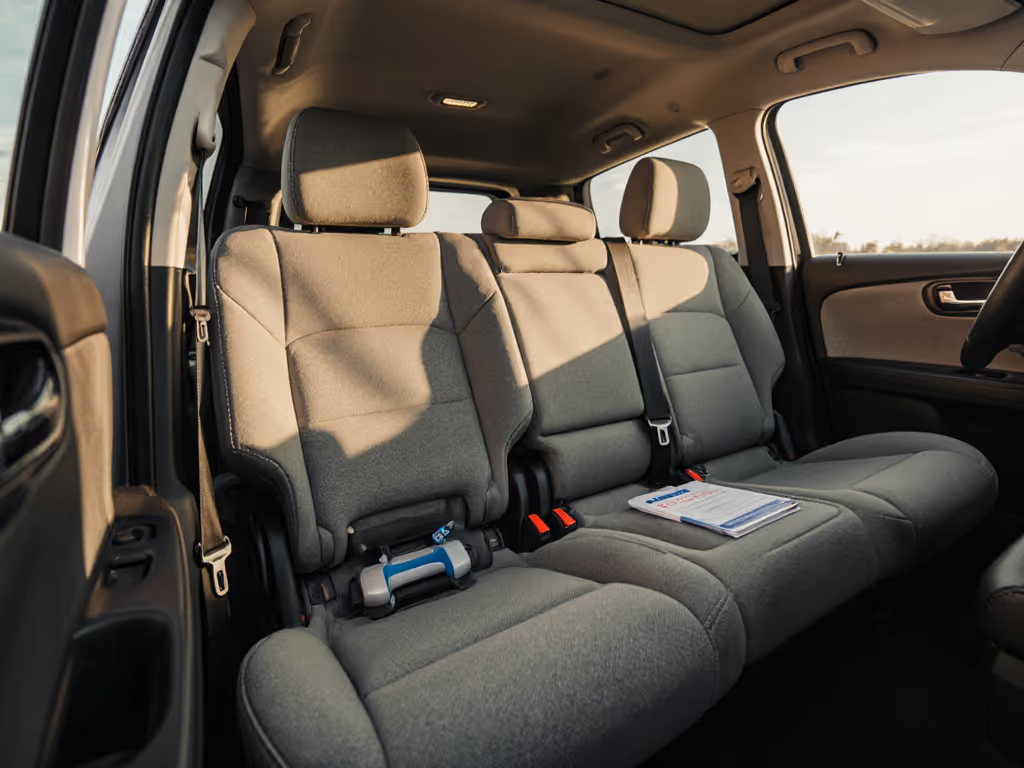
Did you know that over 70 percent of car seats are installed incorrectly according to leading safety studies? Many families trust that if a car seat physically fits, their child is protected, but true safety depends on far more than just matching seat to vehicle. Misunderstanding car seat compatibility can leave children at real risk, so learning the key factors and clearing up common myths is vital for every parent.
Key Takeaways
| Point | Details |
|---|---|
| Compatibility is Complex | Car seat compatibility involves various factors beyond size, including seat design and vehicle features. Always verify compatibility through manufacturer guidelines and installation resources. |
| Child Fit is Crucial | Ensure the car seat fits the child's unique dimensions, including harness position and padding comfort. A technically compatible seat may still not be safe if it doesn't fit the child properly. |
| Stay Informed on Standards | Be aware of evolving safety regulations, such as ECE R44 and ECE R129 (i-Size), which enhance child protection. Understanding these can greatly improve car seat safety. |
| Avoid Common Installation Errors | Misinterpreting fit labels or ignoring specific installation instructions can lead to dangerous situations. Always conduct physical tests and consider professional assistance if you're uncertain. |
Defining Car Seat Compatibility and Common Myths
When it comes to child safety, car seat compatibility isn't just a buzzword - it's a critical factor that can mean the difference between protection and potential risk. Many parents assume that if a car seat fits physically inside their vehicle, it's automatically safe. Not quite.
Compatibility involves multiple complex factors beyond simple size and space. Seat design, vehicle seat contours, seat belt configuration, and LATCH system specifications all play significant roles. A car seat labeled "universal" might not actually be universal for your specific vehicle model. Critical compatibility considerations include:
- Belt length and routing
- Seat angle and slope
- Buckle placement and mechanism
- Vehicle seat cushion firmness
- Proximity to airbags
Installation complexity often surprises parents. What works seamlessly in one car might require alternate belt routes or specific positioning in another. Professional child passenger safety technicians recommend always checking manufacturer guidelines and conducting a thorough compatibility assessment before assuming a car seat will work.
Common myths can lead parents astray. The most dangerous misconception? Believing all car seats are interchangeable across vehicles. Research consistently shows that compatibility varies dramatically by make, model, and year. Always verify through official manufacturer resources, installation videos, and ideally, professional assessment to ensure your child's maximum safety.
Types of Compatibility: Seat, Vehicle, and Child Fit
Car seat compatibility is a three-dimensional puzzle with critical interconnected components: the seat itself, the vehicle, and the child's unique physical characteristics. Understanding these dimensions ensures maximum safety and protection during every journey.
The first aspect, seat compatibility, involves selecting a car seat that matches your child's current age, weight, and height. Car seats are typically categorized into specific groups:
Here's a summary of compatibility types and their key considerations:
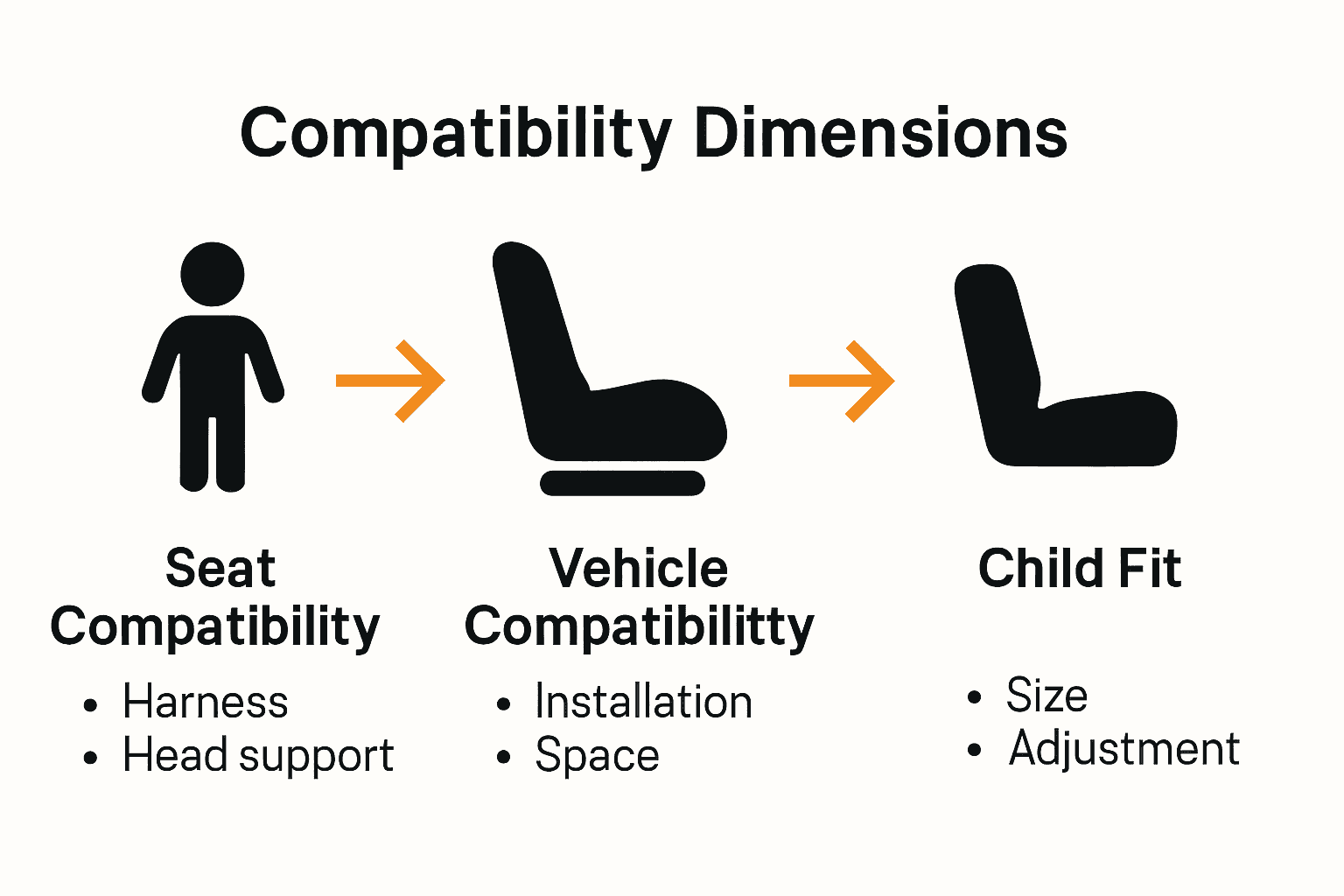
| Compatibility Type | Key Factors | Example Considerations |
|---|---|---|
| Seat Compatibility | Age<br>Weight<br>Height | Infant carrier for newborn<br>Booster for older child |
| Vehicle Compatibility | ISOFIX/LATCH points<br>Seat belt layout<br>Seat shape | Anchor spacing<br>Belt path alignment |
| Child Fit | Harness position<br>Padding fit<br>Headrest adjustment | Shoulder straps at or below shoulders<br>Snug hip support |
- Group 0+: Infant carriers (birth to 15 months)
- Group 1: Rear-facing seats (9 months to 4 years)
- Group 2/3: Forward-facing booster seats (4 to 12 years)
Vehicle compatibility requires examining your specific car's design, including ISOFIX/LATCH attachment points, seat belt configurations, and overall interior geometry. The R129 i-Size regulation, for instance, mandates precise alignment between a child seat's size approval and the vehicle's ISOFIX status to guarantee automatic compatibility.
The third critical dimension is child fit - ensuring the seat's harness, padding, and restraint system perfectly matches your child's body. This means checking for proper shoulder strap positioning, hip width accommodation, and headrest adjustment. A seat might be technically compatible with your vehicle but still inappropriate if it doesn't provide a snug, secure fit for your child's specific body type.
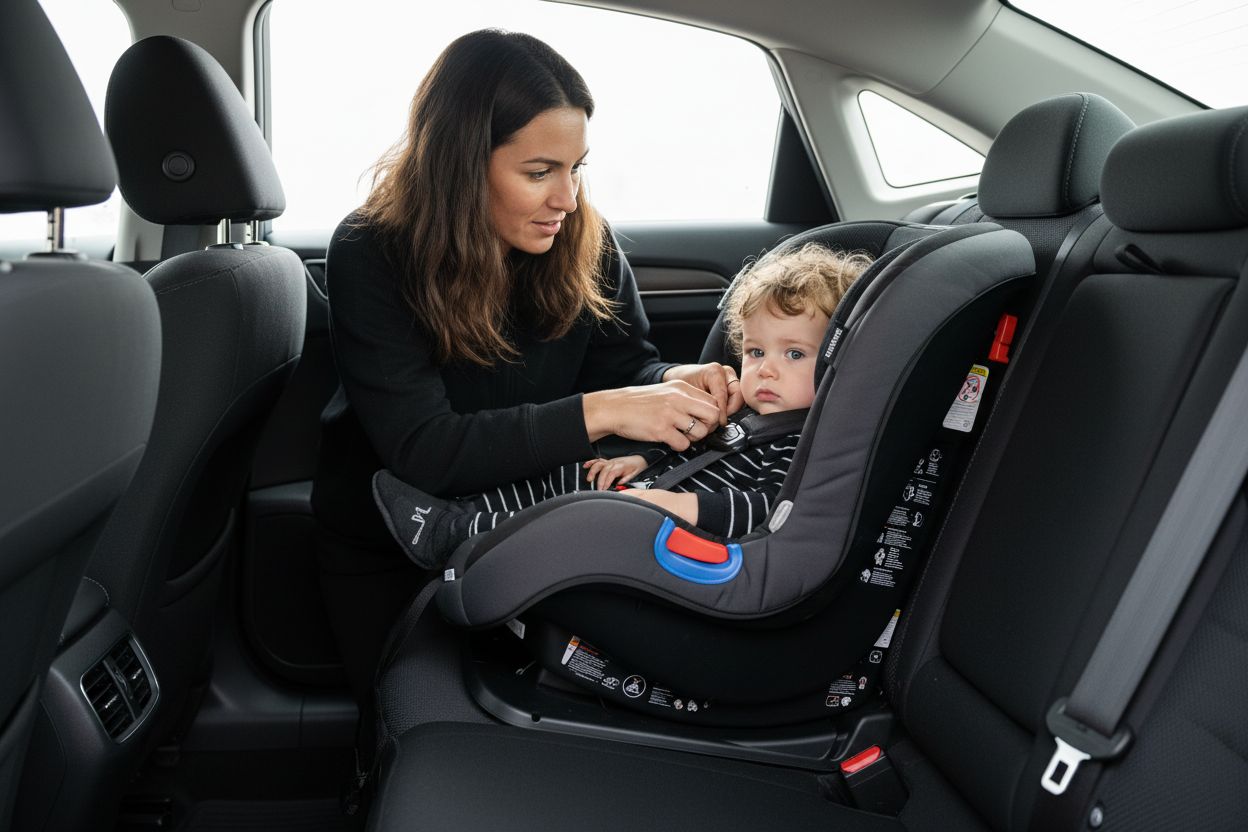
How Car Seat and Vehicle Features Affect Fit
Vehicle design plays a far more complex role in car seat compatibility than most parents realize. What seems like a simple installation can quickly become a challenging puzzle when specific vehicle features come into play. Not all cars are created equal when it comes to accommodating child safety seats.
Specific vehicle features can dramatically impact car seat fit and security. Critical elements include:
- Three-point belt length and configuration
- ISOFIX/LATCH anchor point spacing
- Rear seat contour and angle
- Headrest design and removability
- Seat cushion depth and firmness
- Proximity to airbag systems
Some vehicles inherently support better car seat installations. Wide rear doors, flat back seats, and easily accessible ISOFIX points create more practical mounting options. Spacious interiors provide additional flexibility for different seat sizes and configurations. Conversely, compact cars or those with complex interior geometries can significantly limit installation choices.
Parents must understand that car seat compatibility isn't just about physical space - it's about creating a secure, stable mounting environment. Factors like seat belt mechanism, fabric friction, and structural support all contribute to how effectively a car seat can be anchored. Always conduct a thorough physical assessment and consult both vehicle and car seat manufacturer guidelines to ensure maximum safety.
Understanding Safety Standards and Legal Requirements
Child passenger safety is not just about choosing a car seat - it's about understanding complex legal frameworks designed to protect our most vulnerable travelers. Safety standards have evolved dramatically, transforming from basic recommendations to rigorous, scientifically-backed regulations that mandate specific protective features.
Two primary international standards currently govern child seat safety:
- ECE R44: The traditional regulation focusing on weight categories
- ECE R129 (i-Size): A newer, more comprehensive standard emphasizing height and enhanced protection
The ISOFIX standard (ISO 13216) represents a critical breakthrough in car seat safety. This international standardization specifies precise attachment points, ensuring a more secure connection between child seats and vehicle anchoring systems. Since its enforcement through UNECE R14, new vehicles must include standardized ISOFIX anchorages and top tethers, dramatically reducing installation errors.
Modern regulations go beyond simple attachment requirements. The R129 standard, for instance, mandates crucial safety enhancements like mandatory rear-facing travel until at least 15 months and comprehensive side-impact testing. These regulations reflect ongoing research into child biomechanics and crash dynamics, transforming car seats from basic restraint devices into sophisticated protection systems. Parents should view these standards not as bureaucratic requirements, but as scientifically validated shields designed to maximize their child's safety during every journey.
Practical Steps to Ensure Proper Compatibility
Car seat compatibility isn't a one-time checklist - it's an ongoing process that requires careful research, hands-on testing, and proactive verification. Parents need a strategic approach to navigate the complex landscape of seat selection and vehicle integration.
Before making a purchase, implement these critical compatibility assessment strategies:
- Review manufacturer vehicle-specific compatibility lists
- Watch detailed installation videos for your specific car model
- Consult vehicle owner's manual for precise mounting guidelines
- Measure available seat belt length and attachment points
- Test potential seats in multiple vehicle seating positions
Physical testing is crucial. Many parents discover compatibility issues only after purchasing, so many retailers and manufacturers offer trial periods or demonstration sessions. Don't hesitate to bring your vehicle to a certified child passenger safety technician who can provide professional installation guidance and compatibility verification.
If compatibility remains uncertain, explore alternative options like:
- Requesting dealer assistance with seat fitting
- Investigating seats specifically designed for your vehicle model
- Considering seat return policies that allow exchanges
- Consulting local child safety organizations for personalized recommendations
Remember, compatibility isn't just about physical fit - it's about creating a secure, stable environment that protects your child during every journey. Taking time to research and verify compatibility could potentially save a life.
Common Mistakes and How to Avoid Them
Car seat installation is a minefield of potential errors that can compromise your child's safety. Most parents don't realize how easily well-intentioned actions can create dangerous situations during vehicle travel. Understanding these common pitfalls is the first step toward preventing potentially catastrophic mistakes.
The most frequent compatibility and installation errors include:
- Misinterpreting universal fit labels
- Ignoring manufacturer-specific installation instructions
- Encountering 'buckle crunch' (seat belt blocking proper seat placement)
- Using seats with incorrect angle or slope
- Relying on incompatible belt routing methods
- Failing to verify vehicle-specific compatibility lists
Visual verification becomes crucial in avoiding these mistakes. Many parents assume a seat looks correct, but appearances can be deceiving. Professional child passenger safety technicians recommend a comprehensive check that includes:
- Measuring exact seat belt length
- Testing multiple installation positions
- Confirming harness and anchoring system alignment
- Checking for unexpected movement or instability
Remember, car seat compatibility is not a one-size-fits-all scenario. What works perfectly in one vehicle might be dangerously unstable in another. Always prioritize manufacturer guidelines, seek professional guidance when uncertain, and never compromise on your child's safety through assumptions or shortcuts.
Take the Stress Out of Car Seat Compatibility With Expert Support
Feeling overwhelmed by the maze of car seat compatibility? Misinterpreted fit labels, confusing installation instructions, and uncertainty about your child's safety are real concerns for parents just like you. Reading our article has shown just how complex matching the right convertible car seat to your unique vehicle and child can be. Every feature matters, from ISOFIX anchors and seat contours to precise harness adjustments and safety regulations.
Why leave your child's safety to chance? Visit Fits for Years Seats where you get dependable, research-driven advice tailored to your family’s needs. Dive deeper into our expertly crafted guides and product reviews to find car seats that truly fit, with step-by-step compatibility checks and in-depth comparison tools. Take action now to secure the best protection for your child at every stage. Explore the resources at Fits for Years Seats and make your next car seat choice confidently and stress-free.
Frequently Asked Questions
What factors determine car seat compatibility with my vehicle?
Compatibility involves multiple factors, including seat design, vehicle seat contours, seat belt configuration, LATCH system specifications, and the proximity of airbags. Each vehicle can have unique dimensions affecting how a car seat fits.
How can I ensure my child's car seat is installed correctly?
To ensure proper installation, always refer to the manufacturer's guidelines. Check for proper seat belt routing, ensure there is no 'buckle crunch', and verify the harness system fits snugly against your child. Consulting a certified child passenger safety technician can provide additional guidance.
What are the main types of car seat compatibility?
There are three main types of compatibility: seat compatibility (matching the car seat to your child's age, weight, and height), vehicle compatibility (matching the seat to your car's design and features), and child fit (ensuring the seat accommodates your child’s specific body type).
Why is it important to check for vehicle-specific compatibility?
It is crucial because not all car seats will work in every vehicle even if they fit physically. Different vehicle models have varying anchor points, seat configurations, and interior geometries, which can significantly impact the safety and effectiveness of the car seat installation.


